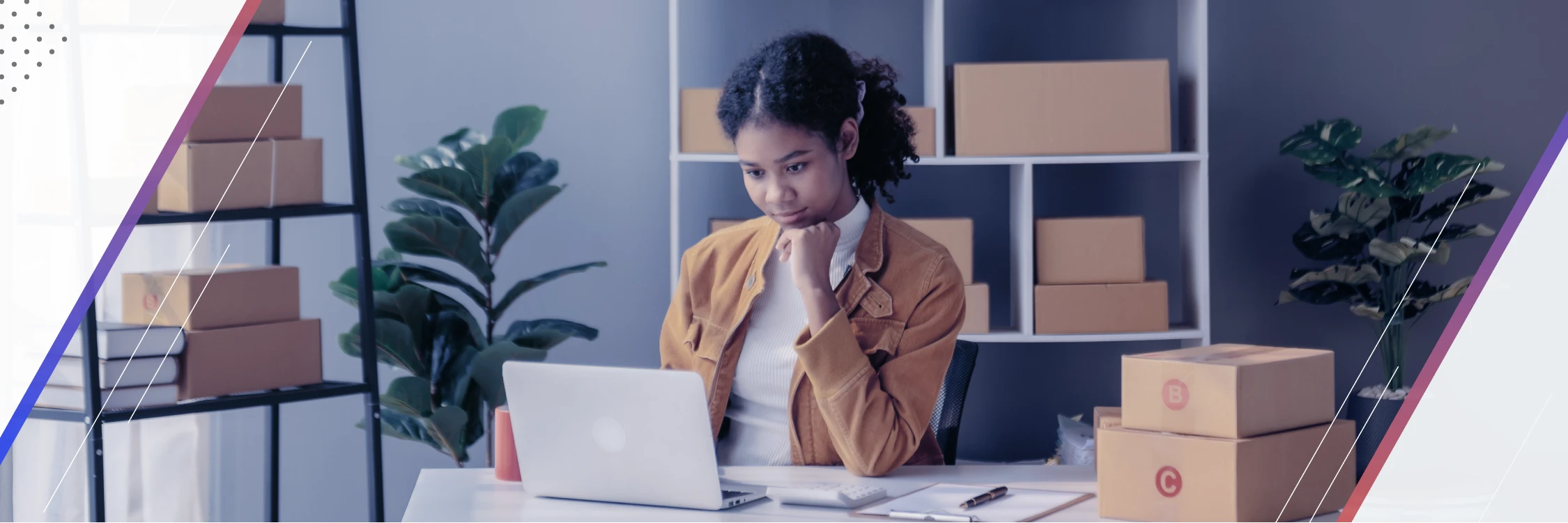


When it comes to order fulfillment and shipping, ecommerce retailers and brands looking to scale their businesses have to contend with high customer expectations while still considering the bottom line. In the age of free shipping vs delivery on the same day delivery, consumer demands are skyrocketing—and small to midsize businesses may find that they can’t keep up.
That’s where third-party logistics (3PL) companies come in. Partnering with a 3PL company is a logical next step for ecommerce businesses whose order volumes are becoming more than they can handle with their current setups. As for how it works? An ecommerce business sends products to the 3PL company for warehousing, fulfilling orders, and shipping from their fulfillment centers, which are ideally numerous and strategically located. This system empowers ecommerce business owners to spend more time and energy on what they do best: running their businesses.
To hear the ins and outs of what a 3PL partnership can bring to an ecommerce business, we talked to Jake Rheude from Red Stag Fulfillment, a 3PL company voted best fulfillment service for handling special needs by FitSmallBusiness.com.
Jake Rheude: Red Stag Fulfillment is a 3PL partner specializing in big, heavy, bulky, and/or oversized products. When ecommerce companies have products that require special handling or need extra attention—like kitting, for example—we are the ideal partner. We believe in being an extension of our clients’ businesses, a seamless addition that helps create custom packaging or work with national and regional carriers on our clients’ behalf to ensure all packages arrive on time and accurately.
>>Fast Fact: Red Stag’s results are pretty remarkable: In 2019, 100% of orders shipped on time, and 99.997% shipped accurately.
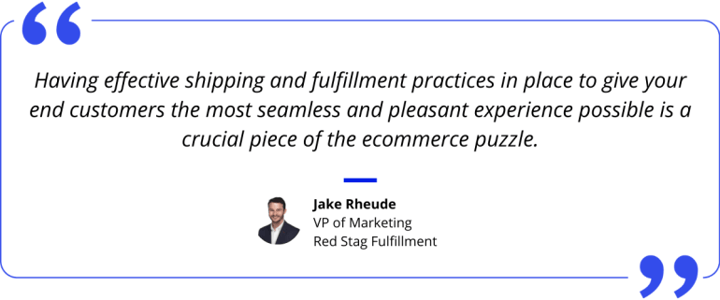
Rheude: Ecommerce sales have grown to account for more than 18% of retail sales worldwide, and online shopping just continues to grow. Buyers are continually turning to online sellers and retailers in place of in-person shopping—and expecting their purchases to arrive on time, accurately, and undamaged is an integral part of the ecommerce experience. Having effective shipping and fulfillment practices in place to give your end customers the most seamless and pleasant experience possible is already expected—it is already a crucial piece of the ecommerce puzzle.
>>Fast Fact: One area where consumers have high expectations? Transparency. A full 83% of shoppers expect regular communication (e.g., emails and alerts) about their purchases with updates on tracking information, shipping changes, or delays.
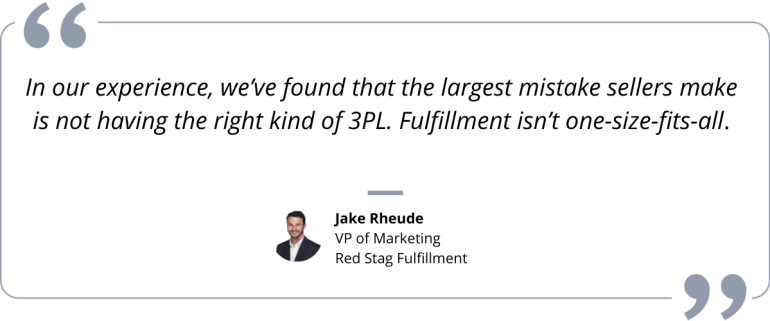
Rheude: Having effective shipping and fulfillment practices is the best way to delight a customer—and on the flip side of that, having poor, ineffective shipping and fulfillment practices is also the fastest way to lose a customer.
>>Fast Fact: The results of not providing the best shipping and fulfillment customer experience? Nearly 50% of shoppers abandon their online carts due to high shipping charges. And over half of shoppers said they won’t purchase something if they don’t know when it will arrive.
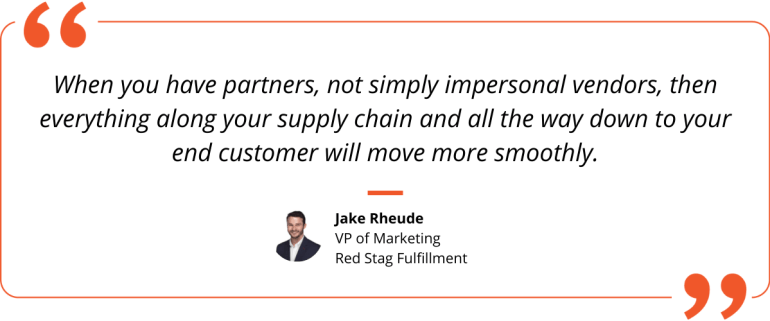
Rheude: In our experience, we’ve found that the largest mistake sellers make is not having the right kind of 3PL. Fulfillment isn’t one-size-fits-all, and if a company selling large, heavy products—like arcade games or paddleboards—tries to rely on a fulfillment company familiar with small, lightweight items, there are bound to be problems. Finding the right fulfillment partner—and I use that word very intentionally because you want someone to partner with you and value your products like their own—is crucial to having an effective, seamless ecommerce experience.
>>Fast Fact: The global 3PL market was valued at $1 trillion in 2020. (Yes, you read that right!) And it’s expected to grow to $1.75 trillion by 2026.
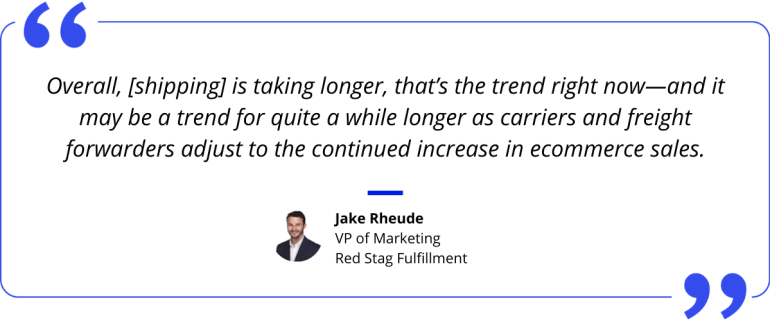
Rheude: Aside from the overall increase in ecommerce shopping, the main trend we’ve noticed is an increase in shipping times. Everything from inbound freight to last-mile delivery is taking longer because of bottlenecks at the ports and carrier capacity limitations. Retailers and sellers are having to wait on manufacturers to get supplies through backed-up ports, and 3PLs are having to negotiate with national and regional carriers to find more containers and trucks for end-customer delivery. Overall, everything is taking longer, that’s the trend right now—and it may be a trend for quite a while longer as carriers and freight forwarders adjust to the continued increase in ecommerce sales.
>>Fast Fact: Despite shipping times increasing overall, consumers still have high expectations when it comes to speed. Over 56% of younger shoppers (ages 18-34) expect businesses to offer same-day delivery.
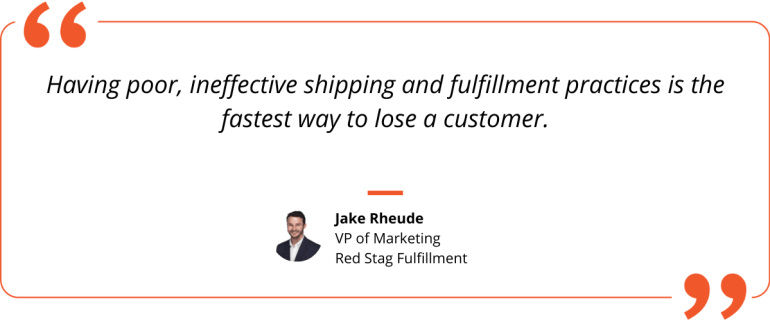
Rheude: When you have partners, not simply impersonal vendors, then everything along your supply chain and all the way down to your end customer will move more smoothly because your partners will work with you and for you to create the best buying experience imaginable.
>>Fast Fact: More than half of retailers said that they find shipping and order logistics to be significantly challenging, and 40% are concerned about shipping costs and managing consumer expectations. A shipping partner can help retailers navigate these complexities.
By guest contributor Leah Allen-Manning




